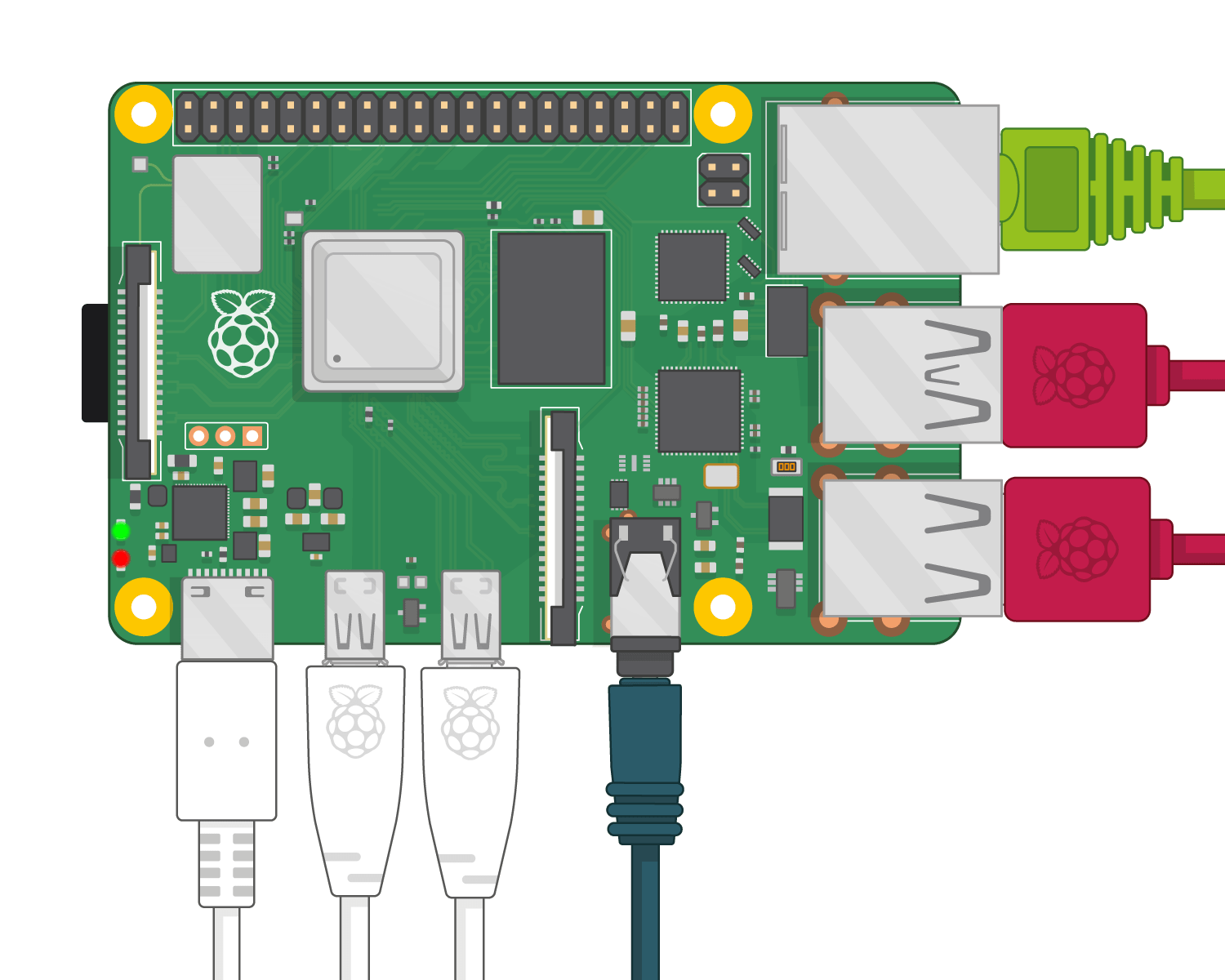RemoteIoT VPC SSH On Raspberry Pi: A Complete Guide
In an age defined by unparalleled digital interconnectedness, how can one securely and efficiently manage Internet of Things (IoT) devices remotely? The answer lies in mastering RemoteIoT VPC SSH on a Raspberry Pi. Integrating IoT devices with cloud-based Virtual Private Clouds (VPCs) using Secure Shell (SSH) offers a robust and effective solution for remote system management.
Setting up RemoteIoT VPC SSH on a Raspberry Pi is a journey through various layers of configuration and understanding. This process extends from configuring your Raspberry Pi to establishing a secure connection with your cloud-based VPC. This piece provides a comprehensive guide, designed to equip both tech novices and seasoned developers with the expertise necessary to implement this technology effectively. This guide is an essential resource for those looking to build a secure, scalable, and reliable IoT setup tailored to their specific needs.
As demand for remote access and IoT applications continues to rise, the ability to effectively use RemoteIoT VPC SSH becomes increasingly crucial. It not only elevates technical proficiency but also safeguards your IoT devices, optimizing their performance and ensuring data integrity. This deep dive into the specifics reveals how you can achieve this seamlessly.
- Unpacking The Woke Mind Virus Definition Impact Explained
- Raspberry Pi Remote Iot Solutions Project Ideas For 2024
Understanding RemoteIoT and Its Importance
RemoteIoT refers to the practice of managing and accessing Internet of Things (IoT) devices remotely. This technology gives users the capability to control, monitor, and interact with IoT devices from anywhere in the world, provided they possess an internet connection. The significance of RemoteIoT lies in its ability to enhance efficiency, reduce costs, and improve scalability for IoT-based systems.
Consider, for example, a smart home system where you can adjust lighting, temperature, and security settings through your smartphone. RemoteIoT facilitates this functionality by effectively bridging the gap between your IoT devices and your remote access point.
Why Use RemoteIoT with Raspberry Pi?
Raspberry Pi has become a highly favored choice for implementing IoT projects due to its affordability, flexibility, and robust community support. Combining RemoteIoT with Raspberry Pi opens a wide range of possibilities for developers and enthusiasts. Here are some reasons why Raspberry Pi is ideal for RemoteIoT:
- Undress Ai Unveiling The Future Of Digital Design Creation
- Remote Iot Access Vpc Ssh On Raspberry Pi Download Guide
- Cost-effective hardware solution
- Wide range of supported software and libraries
- Strong community support for troubleshooting and development
- Compatibility with various IoT protocols
Setting Up VPC for RemoteIoT
A Virtual Private Cloud (VPC) is, in essence, a private network hosted within a cloud provider's infrastructure. It allows users to create isolated environments where they can securely deploy and manage resources. When integrating RemoteIoT with Raspberry Pi, setting up a VPC ensures that your IoT devices remain protected from unauthorized access while maintaining seamless connectivity.
Setting up a VPC involves several key steps:
- Choose a cloud provider that supports VPC (e.g., AWS, Google Cloud, or Azure)
- Create a VPC within your chosen cloud platform
- Configure subnets, routing tables, and security groups
- Connect your Raspberry Pi to the VPC using SSH
By following these steps, you can establish a secure and efficient environment for your RemoteIoT setup.
Introducing SSH and Its Role in RemoteIoT
Secure Shell (SSH) is a cryptographic network protocol used for secure communication over unsecured networks. It acts as a secure channel for remote access to devices, making it an ideal tool for managing RemoteIoT setups. SSH guarantees that all data transmitted between your Raspberry Pi and VPC remains encrypted and protected from potential threats.
Benefits of Using SSH for RemoteIoT
Using SSH for RemoteIoT offers several advantages:
- Encryption of data during transmission
- Authentication of users and devices
- Support for secure file transfers
- Integration with various security protocols
These features make SSH an indispensable tool for anyone working with RemoteIoT and Raspberry Pi.
Configuring Raspberry Pi for RemoteIoT VPC SSH
Before setting up your Raspberry Pi for RemoteIoT VPC SSH, it's essential to ensure you have the following:
- Raspberry Pi (any model with sufficient processing power)
- MicroSD card with a pre-installed operating system (e.g., Raspberry Pi OS)
- Power supply and peripherals (keyboard, mouse, monitor)
- SSH client (e.g., PuTTY for Windows or Terminal for macOS/Linux)
Having the right hardware and software is crucial for a smooth setup process.
Step-by-Step Configuration Guide
To configure your Raspberry Pi for RemoteIoT VPC SSH, follow these steps:
- Install Raspberry Pi OS on your microSD card
- Enable SSH in the Raspberry Pi configuration settings
- Connect your Raspberry Pi to your local network
- Obtain the IP address of your Raspberry Pi
- Use an SSH client to connect to your Raspberry Pi remotely
Once your Raspberry Pi is configured, you can proceed to integrate it with your VPC.
Connecting Raspberry Pi to VPC via SSH
Setting Up SSH Keys for Secure Access
Using SSH keys enhances the security of your RemoteIoT setup by eliminating the need for password-based authentication. To set up SSH keys:
- Generate a public-private key pair on your local machine
- Copy the public key to your Raspberry Pi
- Configure your VPC to accept connections using the public key
This process ensures that only authorized users can access your Raspberry Pi and VPC.
Testing the Connection
After setting up SSH keys, test the connection by attempting to log in to your Raspberry Pi from your local machine. If the connection is successful, you can proceed to integrate your Raspberry Pi with your VPC.
Enhancing Security for RemoteIoT VPC SSH
Best Practices for Securing Your Setup
Security is paramount when working with RemoteIoT VPC SSH. Follow these best practices to protect your setup:
- Use strong, unique passwords for all accounts
- Regularly update your Raspberry Pi's operating system and software
- Monitor network activity for suspicious behavior
- Limit access to your VPC to trusted IP addresses
Implementing these practices reduces the risk of unauthorized access and ensures the integrity of your RemoteIoT setup.
Scaling Your RemoteIoT VPC SSH Setup
Strategies for Scalability
As your RemoteIoT project grows, you may need to scale your VPC SSH setup to accommodate additional devices and users. Consider the following strategies:
- Use load balancers to distribute traffic efficiently
- Implement automation tools for managing multiple devices
- Optimize resource allocation within your VPC
These strategies ensure that your setup remains efficient and scalable as your project evolves.
Troubleshooting Common Issues
Identifying and Resolving Problems
Despite careful planning, issues may arise during the setup and operation of your RemoteIoT VPC SSH. Common problems include:
- Connection timeouts
- Authentication failures
- Network configuration errors
To resolve these issues, consult the documentation for your cloud provider and Raspberry Pi OS. Additionally, seek assistance from community forums and support channels.
Real-World Applications of RemoteIoT VPC SSH
Case Studies and Examples
RemoteIoT VPC SSH has numerous real-world applications across various industries. Some examples include:
- Smart agriculture systems for monitoring crop conditions
- Industrial automation for controlling machinery remotely
- Healthcare IoT devices for patient monitoring
These applications demonstrate the versatility and potential of RemoteIoT VPC SSH in solving complex problems.
Future Trends in RemoteIoT VPC SSH
Innovations and Developments
The field of RemoteIoT VPC SSH is constantly evolving, with new innovations and developments emerging regularly. Some trends to watch include:
- Advancements in quantum encryption for enhanced security
- Integration of AI and machine learning for predictive maintenance
- Expansion of 5G networks for faster and more reliable connections
Staying informed about these trends ensures that you remain at the forefront of technology.
| Category | Details |
|---|---|
| Topic | RemoteIoT VPC SSH on Raspberry Pi |
| Description | The integration of IoT devices with cloud-based VPCs through SSH for secure remote management. |
| Purpose | To provide a guide for tech enthusiasts and professionals to set up and understand RemoteIoT VPC SSH. |
| Key Technologies | Raspberry Pi, SSH, Virtual Private Cloud (VPC), IoT devices |
| Benefits | Enhanced security, efficient remote management, cost reduction, scalability. |
| Target Audience | Tech enthusiasts, hobbyists, and developers. |
| Real-World Applications | Smart agriculture, industrial automation, healthcare IoT. |
| Future Trends | Quantum encryption, AI integration, 5G networks. |
| Reference | Raspberry Pi Official Website |
Conclusion
Mastering RemoteIoT VPC SSH on Raspberry Pi requires a combination of technical knowledge and practical skills. By following the steps outlined in this guide, you can create a secure, scalable, and efficient setup tailored to your needs. Remember to prioritize security, scalability, and innovation as you develop your RemoteIoT projects.
We encourage you to share your thoughts and experiences. Explore our other articles for more insights into the world of IoT and Raspberry Pi. Together, let's shape the future of technology!
Table of Contents
- Understanding RemoteIoT and Its Importance
- Setting Up VPC for RemoteIoT
- Introducing SSH and Its Role in RemoteIoT
- Configuring Raspberry Pi for RemoteIoT VPC SSH
- Connecting Raspberry Pi to VPC via SSH
- Enhancing Security for RemoteIoT VPC SSH
- Scaling Your RemoteIoT VPC SSH Setup
- Troubleshooting Common Issues
- Real-World Applications of RemoteIoT VPC SSH
- Future Trends in RemoteIoT VPC SSH
- Conclusion


Detail Author:
- Name : Brannon Murphy
- Username : jdietrich
- Email : quinton78@cummings.com
- Birthdate : 1988-10-31
- Address : 7249 Bergnaum Lights Port D'angelofort, KS 13337
- Phone : (878) 767-2918
- Company : Dietrich, Balistreri and Douglas
- Job : Ship Carpenter and Joiner
- Bio : Vitae perspiciatis sed aspernatur nostrum consectetur. Ut aperiam tempora nostrum reiciendis qui. Iste aperiam harum neque id ex. Quo placeat aut repellat hic ex.
Socials
linkedin:
- url : https://linkedin.com/in/golden3420
- username : golden3420
- bio : Voluptatibus aut et quia quas.
- followers : 1647
- following : 1967
instagram:
- url : https://instagram.com/reilly2016
- username : reilly2016
- bio : Aut delectus earum voluptatem. Et nihil natus non sit.
- followers : 4633
- following : 2330
twitter:
- url : https://twitter.com/greilly
- username : greilly
- bio : Expedita temporibus totam et enim. Nihil vitae reprehenderit beatae non. Voluptatem repellendus possimus dolores aut voluptatem dolorum sed.
- followers : 5736
- following : 655
facebook:
- url : https://facebook.com/reillyg
- username : reillyg
- bio : Ea enim dicta debitis. Aut dolor sit sapiente recusandae. Aut nam ipsam soluta.
- followers : 6347
- following : 438
tiktok:
- url : https://tiktok.com/@reilly1970
- username : reilly1970
- bio : Sit laboriosam sint aperiam vero amet sit. Ipsum consequatur ullam esse totam.
- followers : 6341
- following : 2031